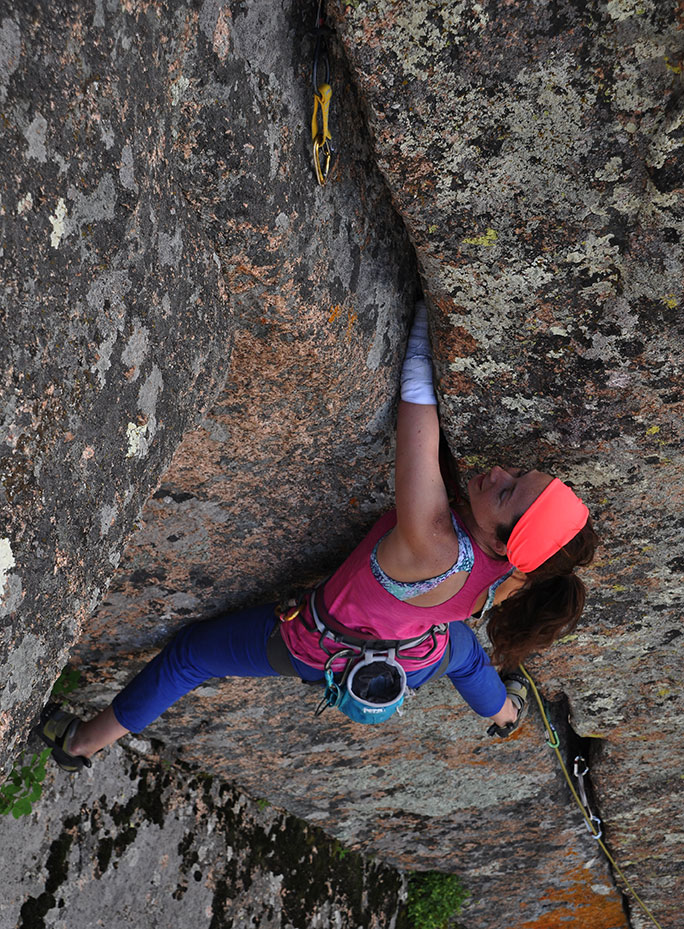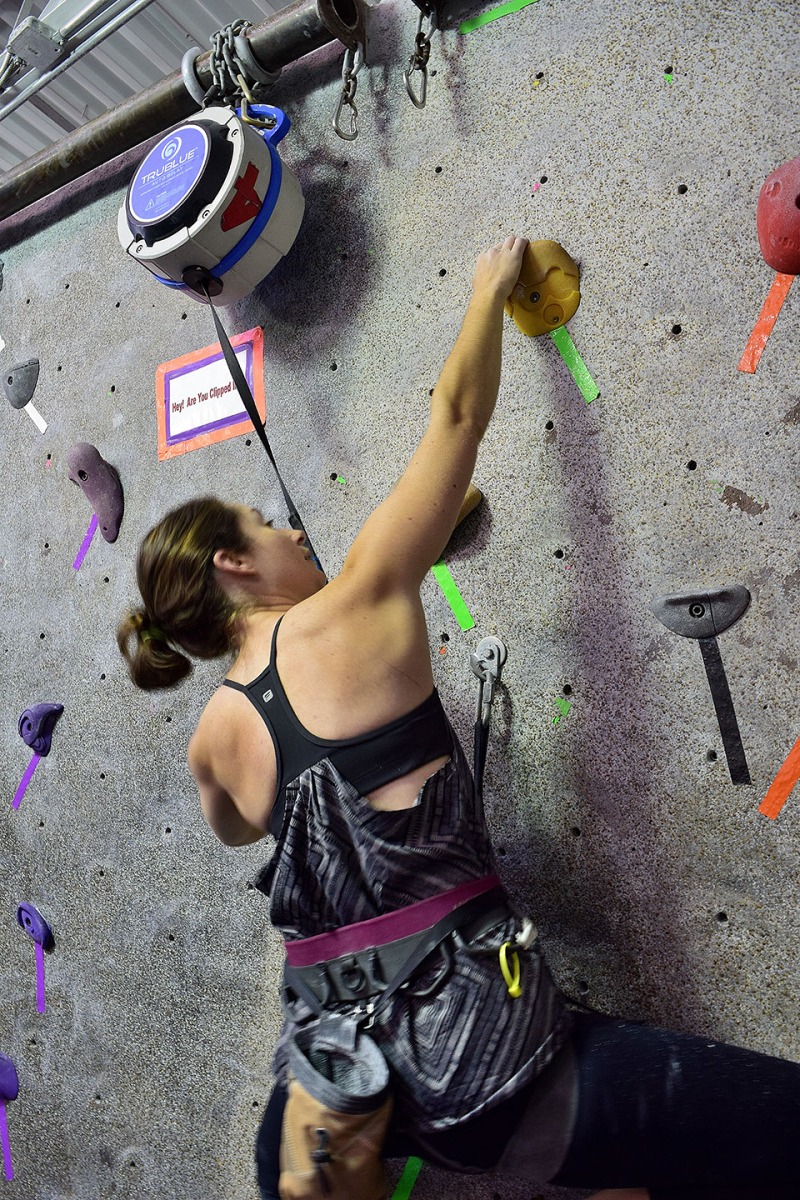
Maureen Beck was kind enough to take time out of her busy work and training schedule to write a guest post for the Head Rush Tech blog. As a competitive climber, she has won five national titles and a gold medal at the 2014 Paraclimbing World Championships in Spain. She is currently training for the IFSC Paraclimbing World Championship in Paris this September where she will defend her title. The TRUBLUE auto belay has become an important part of her training regime, letting her get maximum time on the wall to build strength and endurance.
Maureen has been climbing since she was twelve and developed her one-handed skills at crags across New England. It's been an adventure for her to invent techniques for climbing and training, and she now works with Paradox Sports, an adaptive outdoor recreation organization, as an athlete ambassador sharing her experiences and encouragement with other differently-abled people.
"If I can connect with someone that might not be aware of what they're capable of and push them towards trying something new, maybe even a little outside of their comfort zone, then putting myself out there in the world as a resource and a motivator is entirely worth it," Maureen said. "One arm? One leg? Blind? In a wheelchair? Bring it on."
A big welcome and thank you to Maureen for being our guest blogger this week. We'll be cheering for you as you defend your title in Paris!
Growing up in Maine, there weren't a lot of opportunities to pull on plastic, let alone compete. The now defunct Maine Rock Gym was well over 3 hours of driving, and I had Acadia National Park 20 minutes from my house “motivation to go to a gym was pretty low. I also started climbing around enough crusty old dudes that indoor climbing was a foreign, ugly thing - let's not talk about what COMPETITIVE climbing is doing to ruin our sport. In college though, I did dabble in a few comps, though they were more about beer swilling than climbing hard."
In 2013, I saw that there was an adaptive category at the ABS Nationals. "Huh," I thought. "That's nifty." Later that summer, my phone rings when Ronnie Dickson has figured out how to get an adaptive category added to the citizens' comp at the Vail Mountain Games. That was even cooler, as 13 paraclimbers gathered to compete against one another and drink a lot of 3.2 beer. I didn't come in last, either in the competition or the beer swilling beforehand.
From there it was an upward spiral. Adaptive competitions became more regular and more competitive, and before I knew it I was cashing in my vacation time and miles to go pull on plastic all over the world. For the first time ever, I wasn't just climbing for fun or climbing to get better at climbing “ I needed to start training."
It's funny too, that while being a one-handed climber came easily, actually training for climbing while having one hand was a whole different story. Hangboard workouts were ruled out. Campus boards? Laugh those out of the room.
My training involves specialized tools, not-so-specialized methods, and creative thinking. For finger strength, I rely on a Grippul by Beastfingers - a device which mimics the tendon workout of a hangboard, but instead of hanging from your fingers from above, you can pull up from the ground using only one hand at a time. I use a variety of neoprene and velcro braces attached to weights and cables and bands to my stump - staying balanced on my left side is a huge challenge.

Training for the climbing itself is perhaps the hardest part. Many of the comp walls in Europe are really tall, and comp routes start out easy and get progressively harder towards the top - think, starting at 5.6 and ending at 5.13+. All onsight. Training for that involves lots and lots of laps, and it's hard to get someone to commit to belaying you all evening with few breaks. I feel bad even asking my husband for that much time! When I'm building my base endurance, I’ll often head to Boulder Rock Club, the only gym in our area that has TRUBLUE auto belays. Well set auto belay walls will have routes ranging from 5.8 to 5.11, and I'll usually do a grade pyramid (up AND down) per wall, per set.
Depending on the amount of time I have, I'll do one set per TRUBLUE, which can be 4-5 unique sets. Sometimes I'll repeat, and I'll rest 5-10 minutes in between sets. Not only do I get my butt thoroughly kicked in an hour, but the number of vertical feet I can cover without having to rely on (or feel bad for) a partner is a lifesaver. Climbing on the TRUBLUE also helps put me in a training mindset - I'm less likely to be gossiping with my partner when I don't have one! Down climbing is also an often overlooked tool when training “itâ's a great footwork exercise, and it's so much easier and more comfortable to do on a TRUBLUE than to have a partner feed out slack as you go.
I'll balance roped training with limit bouldering and time in the weight room to stay strong, balanced, and injury free - paying close attention to my joints, particularly in my left arm and right shoulder. I also never turn down a chance for a nice deep tissue massage to help everything move again!
I don't think I'll ever feel like I know exactly what I'm doing for training, so it's important to surround yourself with a network of coaches, friends who are also training nerds, and other resources to keep it fresh and healthy. Staying engaged in your training is the most important part. If you're not interested, you won't do it, and you won't see magical unicorn strength improvements if you're not putting in the sweat equity up front. Really, who doesn't want to become a better climber?
Follow Maureen's adventures on her blog, Mo in Mountains
Help four paraclimbers on the USA Climbing Team get to the World Championships in Paris, France.
Learn more about Paradox Sports and how to get involved
